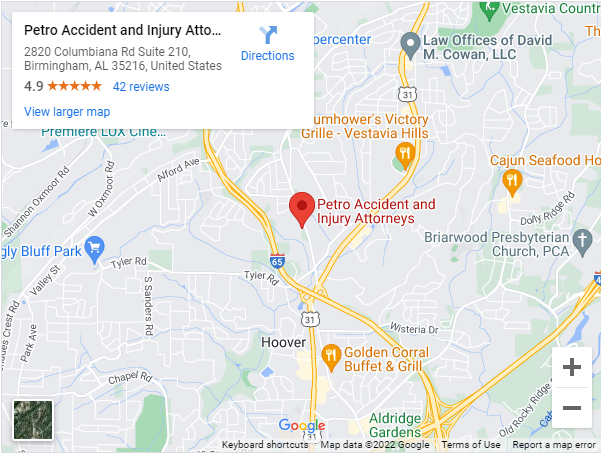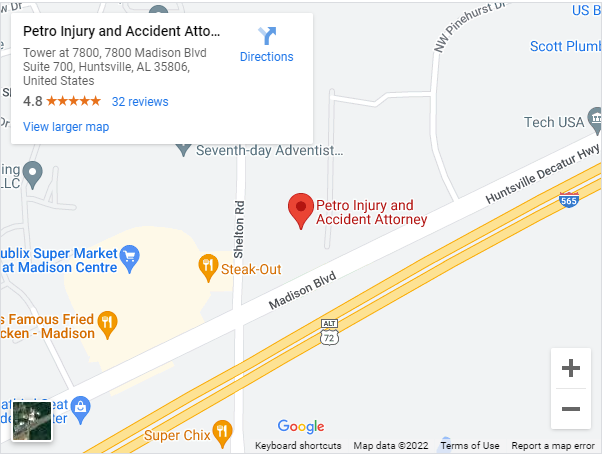Why Does Alabama Discovery Rule Matters?
The Alabama Discovery Rule is a crucial legal doctrine that plays a significant role in determining the timeframe within which a person can file a lawsuit for certain types of injuries or damages. Particularly in Alabama, this rule addresses situations where an individual may not immediately recognize that they have suffered harm due to another party’s negligence or misconduct.
Short Summary
- The Alabama Discovery Rule determines when an individual can file a lawsuit for injuries or damages not immediately apparent due to another party’s negligence.
- Understanding this rule is vital for Alabama residents seeking justice and compensation for latent injuries.
- The rule is relevant to cases like medical malpractice, product liability, fraud, and toxic exposure where injuries or negligence aren’t immediately evident.
- For instance, it can extend the time limit for filing claims related to missed diagnoses, defective products, fraudulent acts, or toxic exposures.
- While the statute of limitations generally limits the time to file a lawsuit to two years from the injury date, the discovery rule can extend this timeframe.
- The discovery rule applies when a plaintiff wasn’t aware of their injury or its cause initially, allowing for potential claims even after the typical deadline.
- The rule can extend the time for filing claims, especially for injuries that become evident later or are hidden.
- However, there are exceptions, such as claims against municipalities or breach of contract cases, which have their separate limitations.
- The rule considers the nature and extent of the plaintiff’s injury, the cause and source of the injury, the date of discovery, and specific limitations or exceptions to its application.
Understanding the nuances of the Alabama Discovery Rule is essential for residents seeking justice and compensation for their injuries.
What Is Alabama Discovery Rule?
In Alabama, the standard time limit for filing personal injury claims is a two-year period beginning from the incident. This timeframe may be prolonged by utilizing the discovery rule.
The discovery rule in Alabama halts the countdown of the statute of limitations under conditions where the plaintiff lacks reasonable awareness of a viable claim against the defendant. This lack of awareness might stem from not realizing they are injured or being unaware of their legal right to pursue a lawsuit.
What Types of Cases Does the Alabama Discovery Rule Typically Apply To?
The Alabama discovery rule typically applies to cases where the plaintiff’s injury or the defendant’s negligence is not immediately apparent or discoverable, such as medical malpractice, product liability, fraud, or toxic exposure. Some examples of cases where the discovery rule has been applied or discussed in Alabama are:
- Medical malpractice: The discovery rule allows plaintiffs to file medical malpractice claims within two years of discovering their injury or the negligent act that caused it, or within four years of the act itself, whichever is earlier.
- Product liability: The discovery rule allows plaintiffs to file product liability claims within one year of discovering their injury or the defective product that caused it, or within two years of the injury, whichever is earlier.
- Fraud: The discovery rule allows plaintiffs to file fraud claims within two years of discovering the fraud or the facts that would reasonably lead to its discovery, or within six years of the fraud, whichever is earlier.
- Toxic exposure: The discovery rule allows plaintiffs to file toxic exposure claims within one year of discovering their injury or the exposure that caused it, or within two years of the last exposure, whichever is earlier.
How Does the Alabama Discovery Rule Differ from the Statute of Limitations?
The Alabama discovery rule is a legal doctrine that allows plaintiffs to file personal injury claims even after the statute of limitations has expired, if they were not aware of their injuries or the cause of their injuries at the time they occurred. The statute of limitations is the time limit within which a plaintiff must file a lawsuit or lose the right to do so. In Alabama, the statute of limitations for most personal injury claims is two years from the date of injury.
The discovery rule differs from the statute of limitations in that it suspends or extends the time limit based on when the plaintiff discovered or should have discovered the injury and its cause. For example, if a plaintiff was exposed to a toxic substance that caused cancer, but did not develop symptoms until years later, the discovery rule would allow the plaintiff to file a claim within one year of learning about the cancer and its link to the exposure. The discovery rule applies to cases where the plaintiff could not reasonably know about the injury or the defendant’s negligence, despite due diligence.
The discovery rule does not apply to all types of personal injury claims in Alabama. For instance, the discovery rule does not apply to claims against municipalities, counties, or deceased defendants, which have shorter and stricter time limits. The discovery rule also does not apply to product liability claims against the original seller, which must be filed within one year of the injury, regardless of when the plaintiff discovered the defect. Additionally, the discovery rule does not apply to breach of contract claims, which have a six-year statute of limitations that runs from the date of the breach, not the date of discovery.
How Does the Alabama Discovery Rule Impact Personal Injury Cases?
The Alabama discovery rule is a legal doctrine that can impact personal injury cases in several ways. Here are some of the main effects of the discovery rule:
- It can extend the statute of limitations for filing a personal injury claim beyond the standard two-year deadline, if the plaintiff was not aware of their injury or its cause at the time it occurred.
- It can allow plaintiffs to pursue claims for injuries that are latent, hidden, or delayed, such as medical malpractice, product liability, fraud, or toxic exposure.
- It can provide plaintiffs with an opportunity to seek justice and compensation for injuries that were caused by someone else’s negligence or intentional misconduct, even if they did not discover the harm until years later.
- It can also impose some limitations and exceptions on the application of the discovery rule, such as shorter and stricter deadlines for claims against municipalities, counties, deceased defendants, or original sellers of defective products. Additionally, the discovery rule does not apply to breach of contract claims, which have a separate statute of limitations.
The discovery rule is a complex and nuanced legal concept that can affect the outcome of a personal injury claim. If you have been injured by someone else’s negligence or intentional misconduct, you should consult with an experienced personal injury attorney as soon as possible to determine the applicable statute of limitations and the possibility of invoking the discovery rule in your case. You can find some of the personal injury attorneys near your location in the location_results section of the tool output.
What Are the Key Factors Considered Under the Alabama Discovery Rule?
The key factors considered under the Alabama discovery rule are:
- The nature and extent of the plaintiff’s injury: The discovery rule applies only to cases where the plaintiff’s injury is latent, hidden, or delayed, such that the plaintiff could not reasonably know about it at the time it occurred.
- The cause and source of the plaintiff’s injury: The discovery rule applies only to cases where the plaintiff’s injury is caused by the defendant’s negligence or intentional misconduct, and the plaintiff could not reasonably know about the defendant’s role or responsibility at the time of the injury.
- The date of the plaintiff’s discovery: The discovery rule suspends or extends the statute of limitations based on when the plaintiff discovered or should have discovered the injury and its cause. The discovery date is determined by the objective standard of what a reasonable person in the plaintiff’s position would have known or done under the circumstances. The discovery date may be different from the actual date of the injury or the date of the defendant’s wrongful act
- The limitations and exceptions to the discovery rule: The discovery rule is not applicable to all types of personal injury claims in Alabama. There are some limitations and exceptions that may affect the application of the discovery rule, such as shorter and stricter deadlines for claims against municipalities, counties, deceased defendants, or original sellers of defective products. Additionally, the discovery rule does not apply to breach of contract claims, which have a separate statute of limitations
File Personal Injury Claim In Alabama Today!
While the Alabama Discovery Rule offers a more flexible timeframe for initiating personal injury claims, navigating its complexities requires a nuanced understanding of its applications and exceptions. Factors such as the nature of the injury, available evidence, and the timing of discovery can significantly influence how courts interpret and apply the rule.
Petro Accident and Injury Attorneys is the right personal injury law firm for you. Mark Petro has more than 30 years of experience helping thousands of individuals in Alabama deal with complex personal injury cases.
We can help you with other types of personal injury cases, such as dog bites, injuries to children, premises liability, product liability, and much more! Get an initial consultation today!




